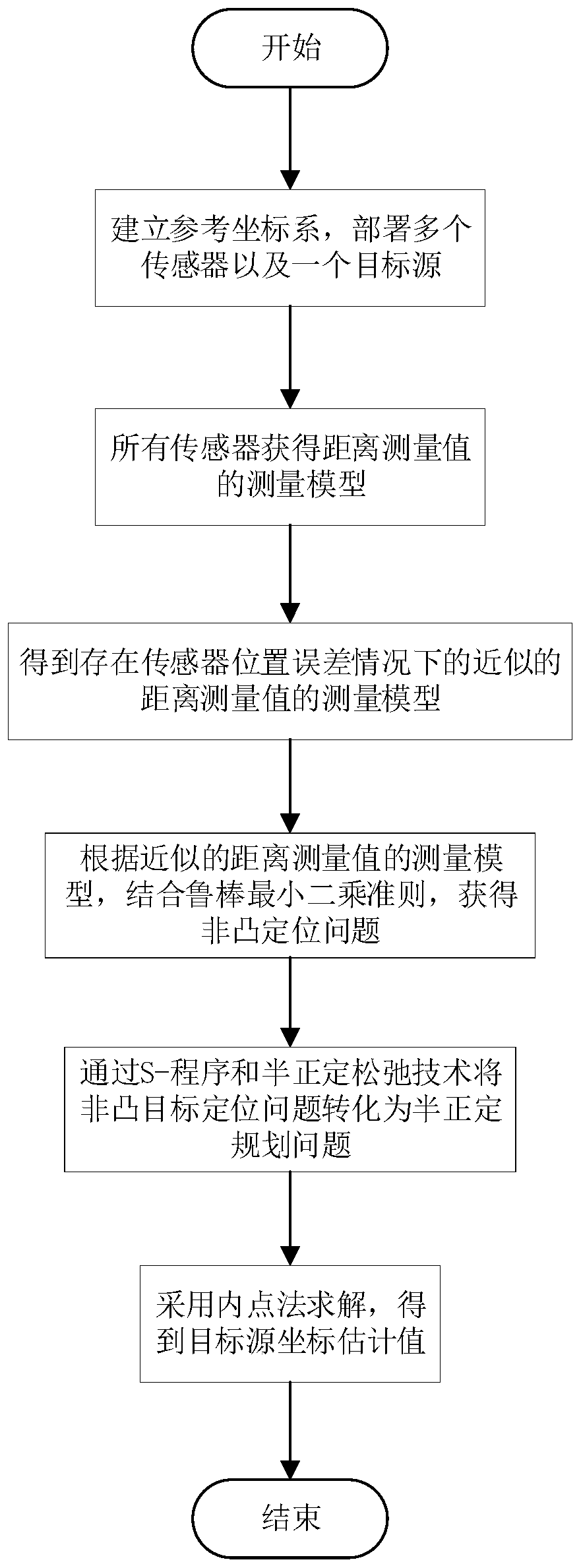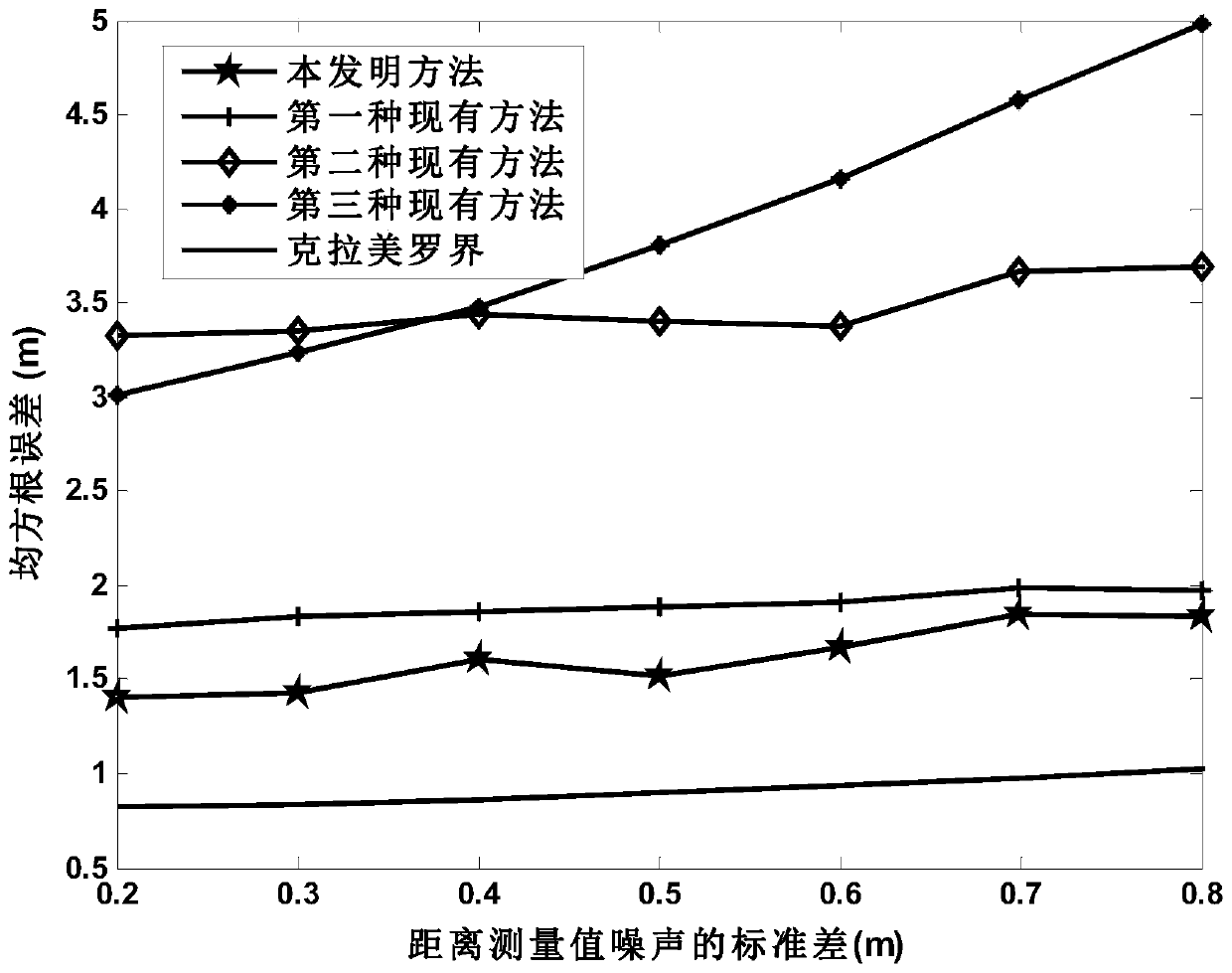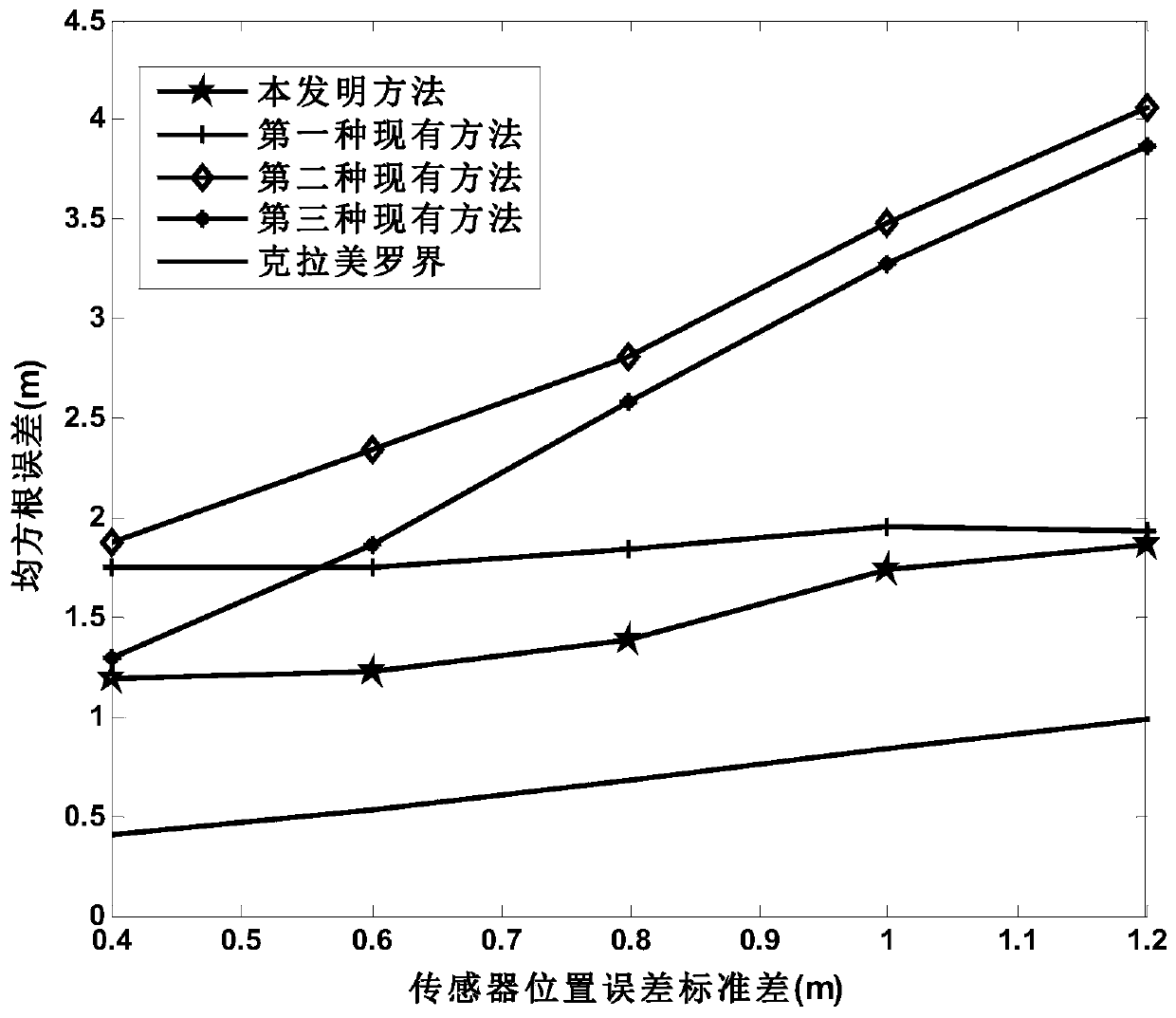TOA-based sensor position error suppression method in asynchronous network
An error suppression, asynchronous network technology, applied in instruments, positioning, measurement devices, etc., can solve the problems of inaccurate sensor position acquisition, execution cost consumption, performance degradation, etc.
- Summary
- Abstract
- Description
- Claims
- Application Information
AI Technical Summary
Problems solved by technology
Method used
Image
Examples
Embodiment Construction
[0023] The present invention will be further described in detail below in conjunction with the accompanying drawings and embodiments.
[0024] A sensor position error suppression method based on TOA in an asynchronous network proposed by the present invention, its overall realization block diagram is as follows figure 1 As shown, it includes the following steps:
[0025] Step 1: Establish a planar Cartesian coordinate system as a reference coordinate system in the two-dimensional asynchronous wireless sensor network environment, and set N sensors and one target source in the two-dimensional asynchronous wireless sensor network environment, place the i-th sensor at The real coordinate position in the reference coordinate system is denoted as a i , record the coordinate position of the target source in the reference coordinate system as x, a i =(a i1 ,a i2 ), x=(x 1 ,x 2 ); wherein, N is a positive integer, N represents the total number of sensors in the two-dimensional as...
PUM
 Login to View More
Login to View More Abstract
Description
Claims
Application Information
 Login to View More
Login to View More - R&D
- Intellectual Property
- Life Sciences
- Materials
- Tech Scout
- Unparalleled Data Quality
- Higher Quality Content
- 60% Fewer Hallucinations
Browse by: Latest US Patents, China's latest patents, Technical Efficacy Thesaurus, Application Domain, Technology Topic, Popular Technical Reports.
© 2025 PatSnap. All rights reserved.Legal|Privacy policy|Modern Slavery Act Transparency Statement|Sitemap|About US| Contact US: help@patsnap.com



